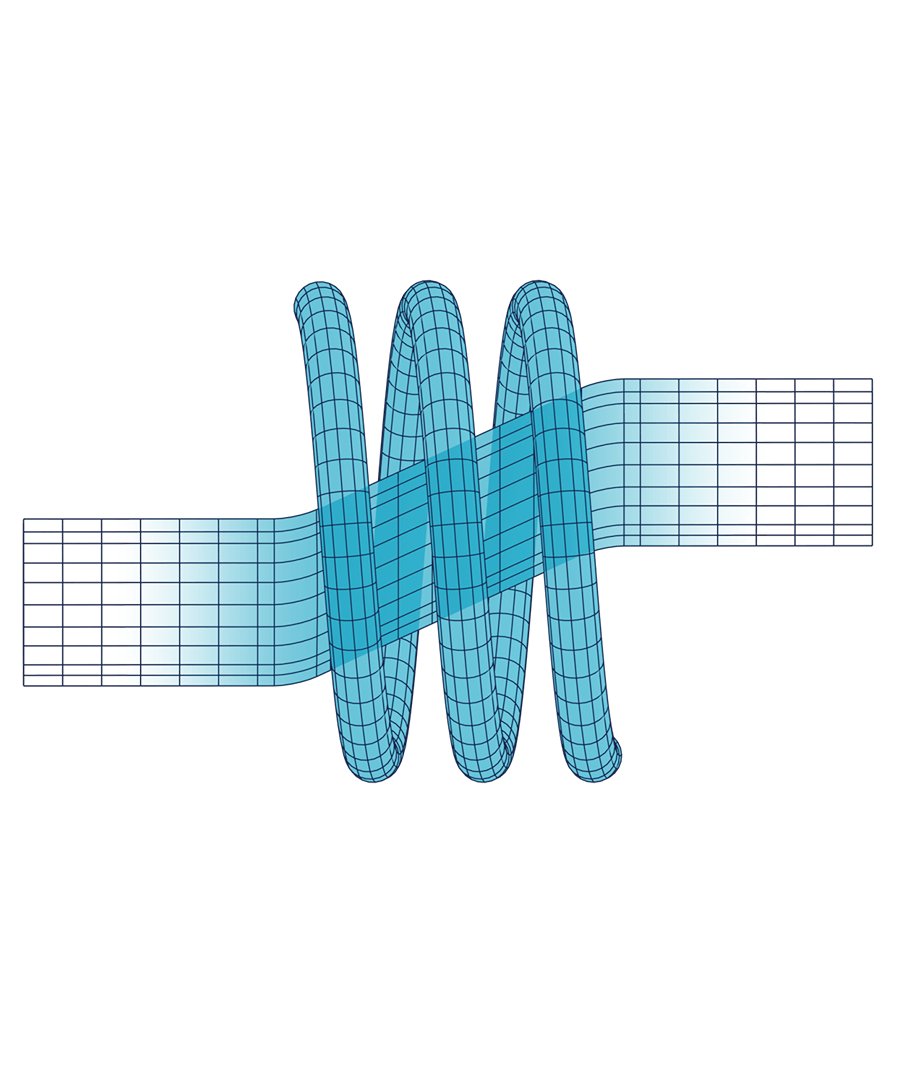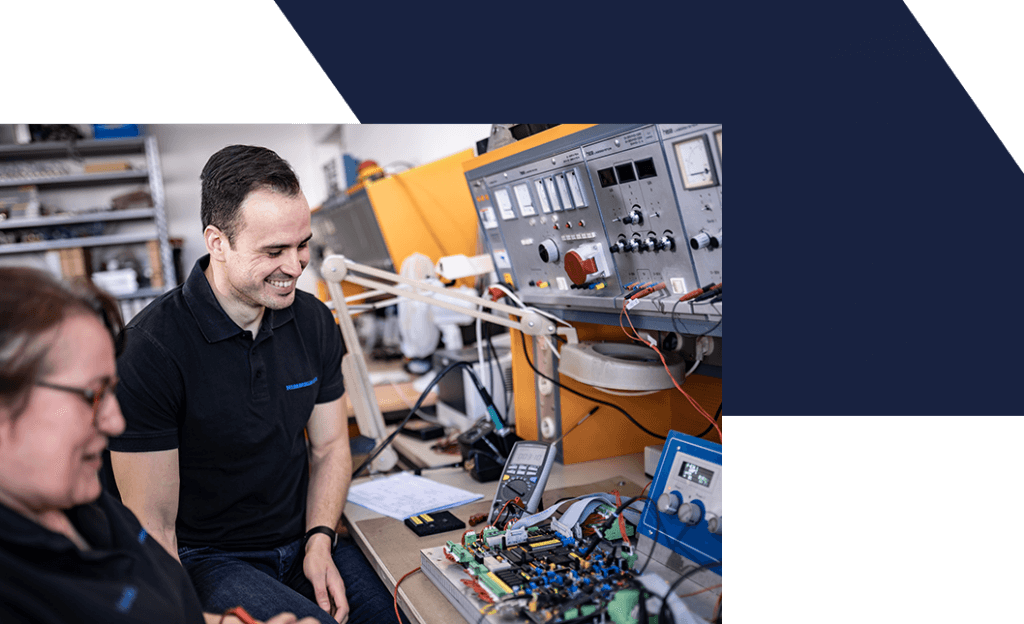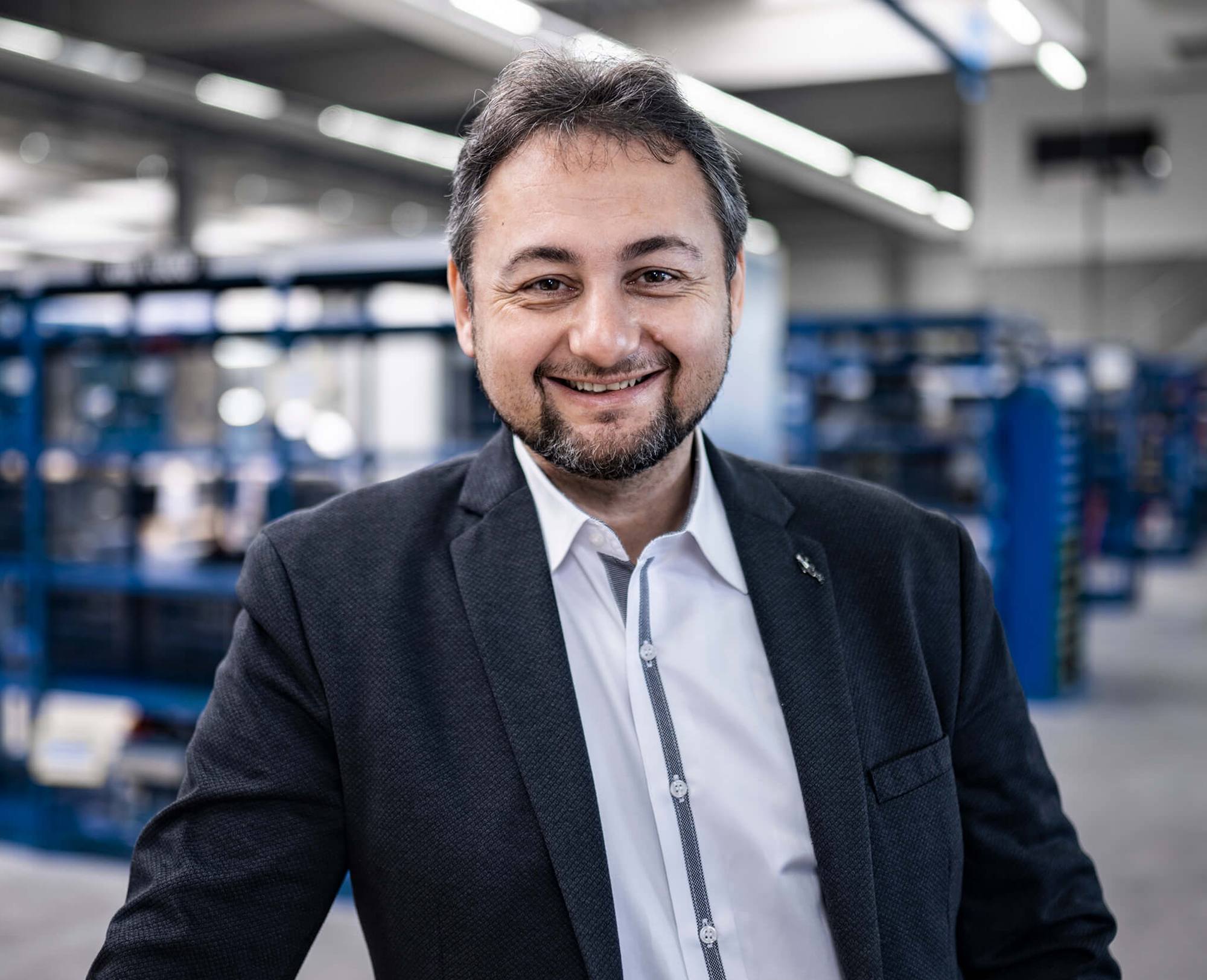Induction forming techniques –
Forging, pressing, bending

With forming techniques, induction heating is used in many ways for metal forming. Today, it is mainly used for hot forming and semi-hot forming in forging shops as well as pressing and rolling mills. This is because induction heating allows the feedstock to be heated quickly and directly, which has process engineering, economic and environmental benefits.
With forging, induction heating can save costs for many reasons. Inductive forge heaters can be easily automated and integrated into series production. They require little space compared to gas-fired furnaces and guarantee cost-effective energy consumption.
In addition, induction heating processes produce significantly less scale on the surface of the components (less than 0.5 %). On the one hand, this is an economic benefit, as less scale is introduced into the forming dies, giving them a longer service life. On the other hand, this creates a resource benefit, as no material is heated unnecessarily. Also due to the uniform ingot temperature and a uniform microstructure, there is better forming and less scrap.
Since induction systems can simply be switched off during phases of production interruptions, there is no unnecessary heating and thus no overheating. The inductive forging block heating systems do not require any warm-up times. And since there are no combustion residues, the environment is also polluted much less.
The specification-compliant temperature distribution through precisely fitting inductors is particularly important for the pressing of pipes and hollow profiles. This is because these enable balanced heating in the edge zones, so that no uneven edge thicknesses form. The bolt temperature, which drops towards the rear and compensates for the forming heat, can also only be achieved by inductive heating.
Where are forming techniques used?
The innovative technology of precision forging can only be implemented with precise temperature control. With the induction process, this is given by the selectability of the frequency – depending on the dimensions of the components to be forged.
Components with larger cross-sections are heated on the basis of medium-frequency converters, while high-frequency converters tend to be used for smaller workpieces. This allows the penetration depth and temperature level to be set precisely.
Induction heating offers an enormous speed advantage over external heating if the working frequency is chosen correctly. This is because the heat is generated directly in the material during inductive heating within the penetration depth. This means that heat conduction within the material cross-section takes place more quickly than if the heat is initially transferred to the workpiece from outside by convective heat transfer or thermal radiation.
Our process
This is how we implement inductive forming for you
The right inductor, the right system, other components – we will show you what your optimum process solution for metal forming looks like.


Our service
Other services we offer
Various services related to the development process, financing and maintenance of the induction systems are standard with us.
Induction
Technology

